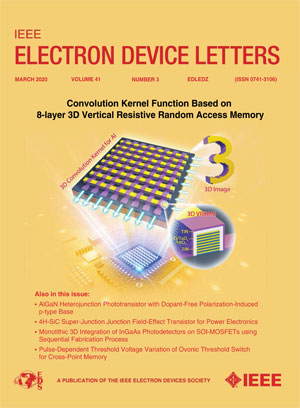紧凑片上死胡同混合拓扑带通滤波器与提取极点单元使用TGV技术
IF 4.1
2区 工程技术
Q2 ENGINEERING, ELECTRICAL & ELECTRONIC
引用次数: 0
摘要
提出一种紧凑的片上混合拓扑带通滤波器(BPF)。该BPF采用了一种新的“死胡同”结构,可以同时在高频和低频两端成对地实现传输零。还采用了一个提取极单元,它可以在BPF的通带外产生两个额外的TZs。多个TZs的存在可以极大地提高带外抑制性能。该拓扑结构采用激光诱导湿法玻璃通孔刻蚀(TGV)技术实现,具有精度高、易于集成和工艺简化等优点。特别是,所提出的拓扑结构可以有效地减少24%的滤波面积。金属-绝缘体-金属(MIM)电容器和螺旋电感的使用进一步减小了其尺寸。制作的原型显示,最小带内插入损耗为2.49 dB, 3db分数带宽为25.3%。在${f}} {{0}} =2.45$ GHz时,BPF的尺寸为1.6 mm $\ × 0.8$ mm $\ × 0.35$ mm,仅为$0.0131~\lambda _{{0}} × 0.0065~\lambda _{{0}}$。本文章由计算机程序翻译,如有差异,请以英文原文为准。
Compact On-Chip Cul-De-Sac Mixed Topology Bandpass Filter With Extracted-Pole Unit Using TGV Technology
A compact on-chip mixed topology bandpass filter (BPF) is proposed. By virtue of a new cul-de-sac structure, this BPF realizes transmission zeros (TZs) in pairs at both high and low frequency ends simultaneously. An extracted-pole unit, which can generate two additional TZs outside the passband of the BPF, is also employed. The presence of multiple TZs can greatly improve the outband rejection performance. The proposed topology is realized using laser-induced wet etching through glass via (TGV) technology, which has merits of high precision, ease integration, and process simplification. In particular, the proposed topology can effectively reduce the filter area by 24%. The use of Metal-Insulator-Metal (MIM) capacitors and spiral inductors further reduces its size. A fabricated prototype shows the minimum in-band insertion loss is 2.49 dB and the 3-dB fractional bandwidth is 25.3%. The BPF size is 1.6 mm
$\times 0.8$
mm
$\times 0.35$
mm, which is only about
$0.0131~\lambda _{{0}} \times 0.0065~\lambda _{{0}}$
at
${f}_{{0}} =2.45$
GHz.
求助全文
通过发布文献求助,成功后即可免费获取论文全文。
去求助
来源期刊

IEEE Electron Device Letters
工程技术-工程:电子与电气
CiteScore
8.20
自引率
10.20%
发文量
551
审稿时长
1.4 months
期刊介绍:
IEEE Electron Device Letters publishes original and significant contributions relating to the theory, modeling, design, performance and reliability of electron and ion integrated circuit devices and interconnects, involving insulators, metals, organic materials, micro-plasmas, semiconductors, quantum-effect structures, vacuum devices, and emerging materials with applications in bioelectronics, biomedical electronics, computation, communications, displays, microelectromechanics, imaging, micro-actuators, nanoelectronics, optoelectronics, photovoltaics, power ICs and micro-sensors.
 求助内容:
求助内容: 应助结果提醒方式:
应助结果提醒方式:


